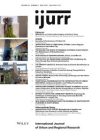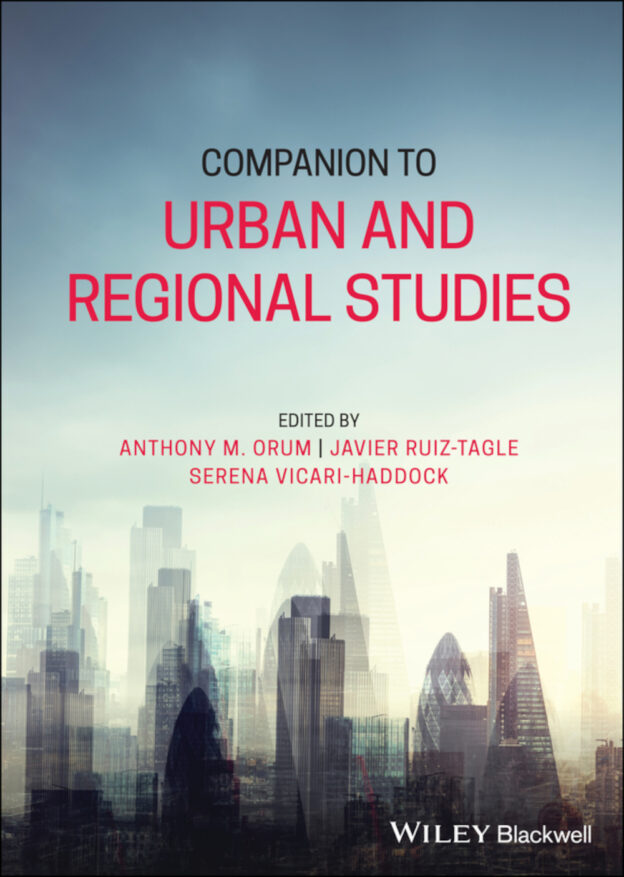Writing about cities and regions is not an easy task, given that they and their constitutive elements (nature, society and environment) are changing dynamically all the time. A disruptive and global event such as the COVID-19 pandemic leads to even greater and faster change, with which academic research does its best to keep up. This edited book—written shortly before and during the pandemic—discusses these new challenges as they play out within the urban field.
The scientific contribution of the volume is both credible and relevant, not least because the editors are academics whose research and teaching activities stretch over many years (particularly in the case of Professor Orum), cover a wide range of topics in urban studies, and have been conducted in different geographic contexts (North America, Latin America and Europe), providing an insightful and complementary vision when selecting contributions for the book. Likewise, the contributors—whose academic backgrounds are presented in detail—have different levels of experience, from PhD candidates to professors in many fields within the social and economic sciences. The editors explain that they ‘looked for authors all around the world in an effort to avoid the practices of requesting authors from the Global North to write about—and on behalf of—the Global South’, ‘ embraced the inclusion of young scholars’, and ‘promoted the inclusion of women’ (p. xxviii).
Alongside the aim of covering some of the issues identified in Orum’s previous Encyclopedia of Urban and Regional Studies (2019) in more depth, another objective of the book which can be deduced (although not explicitly stated) is to identify, address and understand the new urban issues. The intended audience for this Companion to Urban and Regional Studies includes not only urban researchers and practitioners, but also scholars from other social, political and economic fields. It will also appeal to a general audience, because it holds things of interest to everyone.
Despite being an edited work, the book’s content is remarkably coherent: it is composed of 27 chapters grouped into five main parts, along with a final chapter/part comprising the Conclusions. The promising title of the Introduction—A World of Cities and Urban Problems in the Twenty-First Century—can be explained by the fact that after the turn of the millennium, ‘a combination of political, economic and sociocultural processes has produced explosive urbanization, growing inequalities, environmental degradation, and humanitarian crises all over the world’; consequently, ‘the world of cities and today’s urban problems look a lot different than in the twentieth century’ (p. xxv).
The Introduction contains an exhaustive and welcome list of the problems and challenges that confront today’s urban world. It starts with the terrorist attacks on the World Trade Center in 2001, but also includes environmental and health issues and events, such as the 2004 Indian Ocean earthquake and tsunami and the 2005 Kyoto Protocol for the reduction of greenhouse emissions. Last, though definitely not least, the global pandemic is discussed at length, with incisive criticism of the inadequate national responses (‘In terms of politics, many governments have not protected their citizens’, p. xxv), and the way COVID-19 ‘exposed all pre-existing inequalities’ within and between societies (p. xxvi).
In its various parts the book considers different categories of urban issues and approaches to urban studies as a scientific field of research. The first part has a specifically regional focus: in seven chapters it presents the main characteristics and evolutionary paths of cities in most regions of the world (with the exception of North and Saharan Africa and the Middle East), generally viewing them in the context of intense economic and cultural globalization. The second part, which is explicitly theoretical, looks at new directions in Frankfurt Critical Theory, the legacies and remnants of the Chicago School, and environmental perspectives on cities. The third part presents a variety of methodological approaches to urban research: demographic methods, geographic information systems and the emergence of neo-cartography, ethnographic urban research, social networks, and policy mobilities. Part four focuses on the social problems of cities: social heterogeneity and diversity, inequalities, residential contexts, migrations, and the nexuses between segregation, social mix and gentrification. The last substantive part discusses political and economic problems in cities, including urban citizenship and governance, policies and policy approaches, financialization and real estate, and housing in the global North and South.
What is missing, however, is a section dedicated entirely to environmental and urban health issues. The editors do mention these matters in the Introduction in relation to the COVID-19 pandemic and its effects on urban life. There is also a chapter in the theoretical section (chapter 10 in Part II) which focuses on some of the debates in this field (e.g. conceptualizing the city as an organism and discussing the environmental problems that cities generate or contribute to). It is also true that there are a great many dimensions to urban health, which has evolved as an independent interdisciplinary scientific field. Nonetheless, it would have been justified to treat these subjects in more depth, given the global importance of environmental and urban health issues today—more than half of the world’s population already lives in cities, and urban populations will be even more numerous in the future. Even if these topics couldn’t be covered in their entirety, surely they deserved to be treated in a dedicated section.
Similarly, discussion of the global pandemic is mainly limited to the Introduction—although its impact is also referred to in chapter 8, with its ‘recognition of fundamental social goods nobody can do without: i.e. health, housing, mobility, solidarity and community’ (p. 156); and in chapter 12, which discusses (among other demographic methods) the controversial tracking technologies used ‘to map out individuals’ movements and the spreading of the virus’ (p. 255).
Finally, the number of figures in the book is limited, and those that do exist are either schematic diagrams or graphs in greyscale. Despite these observations, the book offers a welcome overview of cities around the world and their contemporary challenges, as well as the urban world as a scientific field more generally.
Gabriel Camară is a lecturer in the Department of Geography at the Alexandru Ioan Cuza University of Iași, Romania. His research interests are in human geography, focusing on urban geography and specific topics such as green cities, urban health, and sustainable tourism.
Anthony M. Orum, Javier Ruiz-Tagle and Serena Vicari Haddock (eds.) Companion to Urban and Regional Studies. Oxford: Wiley Blackwell © 2021. Cover used with permission of Wiley Blackwell.
Views expressed in this section are independent and do not represent the opinion of the editors.

